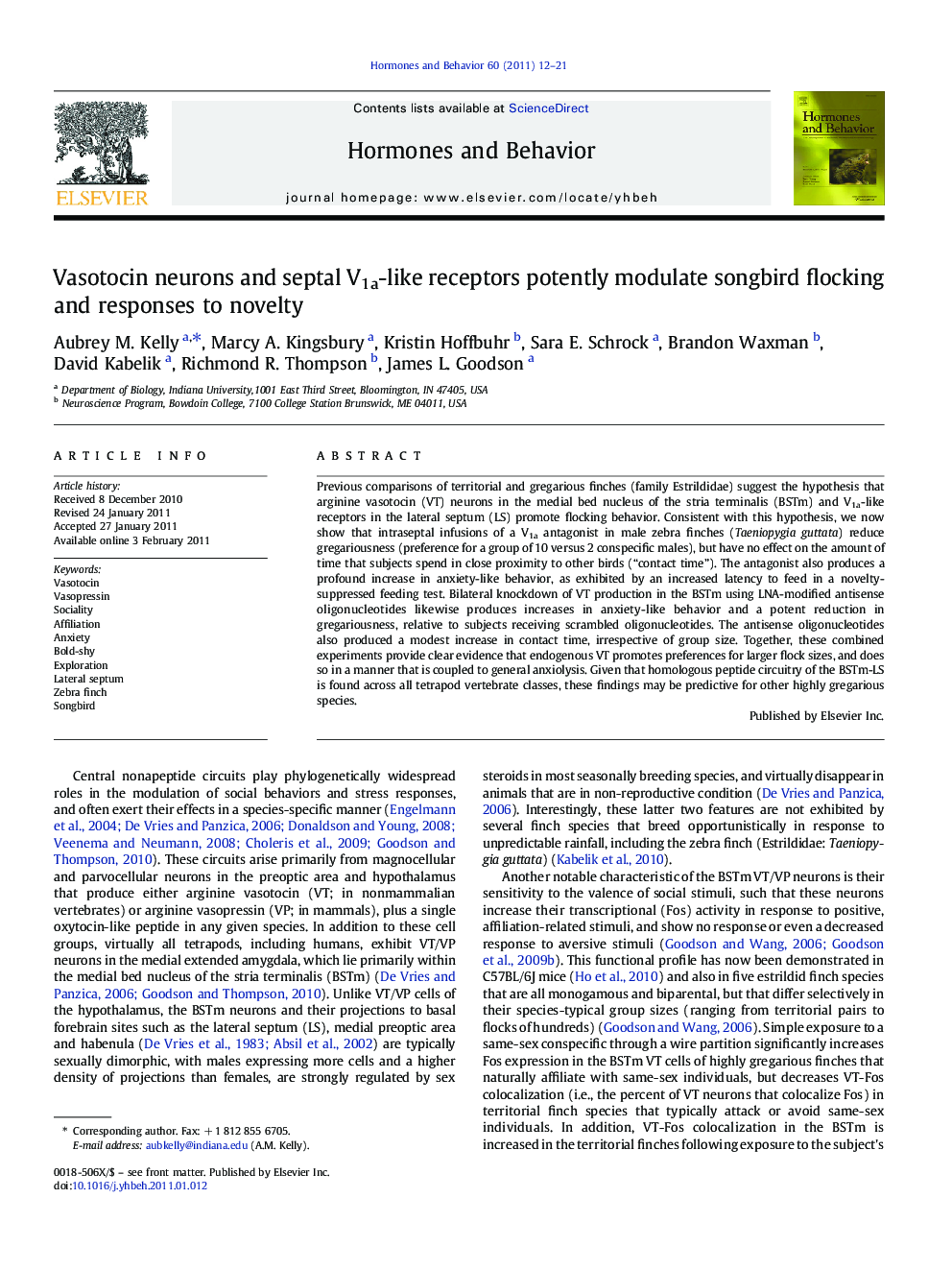| کد مقاله | کد نشریه | سال انتشار | مقاله انگلیسی | نسخه تمام متن |
|---|---|---|---|---|
| 323443 | 540681 | 2011 | 10 صفحه PDF | دانلود رایگان |

Previous comparisons of territorial and gregarious finches (family Estrildidae) suggest the hypothesis that arginine vasotocin (VT) neurons in the medial bed nucleus of the stria terminalis (BSTm) and V1a-like receptors in the lateral septum (LS) promote flocking behavior. Consistent with this hypothesis, we now show that intraseptal infusions of a V1a antagonist in male zebra finches (Taeniopygia guttata) reduce gregariousness (preference for a group of 10 versus 2 conspecific males), but have no effect on the amount of time that subjects spend in close proximity to other birds (“contact time”). The antagonist also produces a profound increase in anxiety-like behavior, as exhibited by an increased latency to feed in a novelty-suppressed feeding test. Bilateral knockdown of VT production in the BSTm using LNA-modified antisense oligonucleotides likewise produces increases in anxiety-like behavior and a potent reduction in gregariousness, relative to subjects receiving scrambled oligonucleotides. The antisense oligonucleotides also produced a modest increase in contact time, irrespective of group size. Together, these combined experiments provide clear evidence that endogenous VT promotes preferences for larger flock sizes, and does so in a manner that is coupled to general anxiolysis. Given that homologous peptide circuitry of the BSTm-LS is found across all tetrapod vertebrate classes, these findings may be predictive for other highly gregarious species.
Research highlights
► We here tested the hypothesis that VT circuits promote gregariousness in finches.
► Intraseptal V1a antagonism decreased large group preferences by a median of 80%.
► Infusions of VT antisense oligos into the BSTm also decreased gregariousness by 80%.
► Both manipulations increased anxiety-like behavior.
► VT promotes gregariousness in a manner that is coupled to anxiolysis.
Journal: Hormones and Behavior - Volume 60, Issue 1, June 2011, Pages 12–21